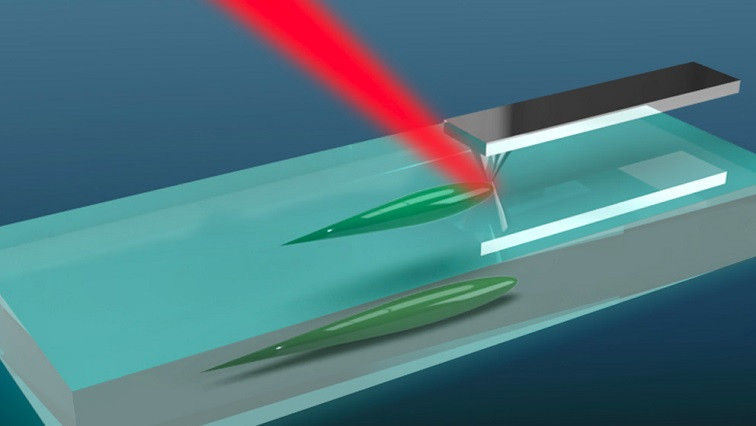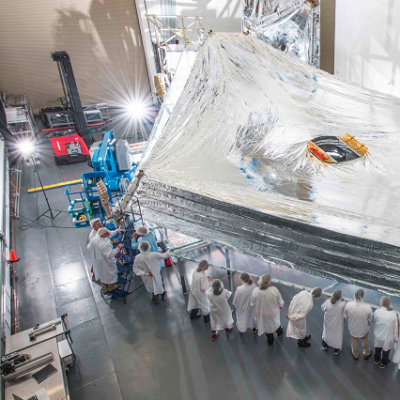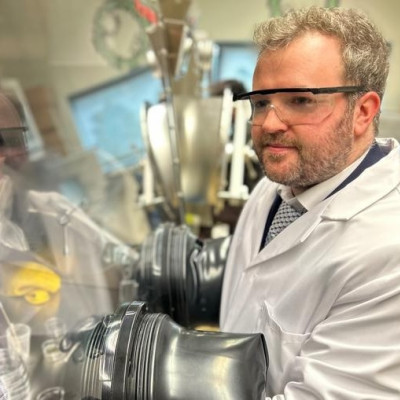For the first time, the subsurface structural changes of silica glass due to nanoscale wear and damage has been revealed via spectroscopy, which may lead to improvements in glass products such as electronic displays and vehicle windshields, according to a team of international researchers.
“One of the main research areas in my group is glass surface science, chiefly the relationship between property, the structure of the glass, and mechanical and chemical properties, especially mechanical durability and chemical durability,” Seong Kim, Penn State distinguished professor of chemical engineering and co-lead author of the study in Acta Materialia, said. “And one of the techniques that we we've been usingis vibrational spectroscopy. But the challenge of the nanoscale structural analysis of a glass surface is that many of the spectroscopy techniques that people use widely do not work here.”
Infrared spectroscopy can detect surface defects only to a degree. If the type of defect that is generated on the glass surface is smaller than 10 microns, which is below the 10-micron wavelength of infrared spectroscopy, it cannot be properly analyzed or imaged. Analysis techniques such as Raman spectroscopy used in the glass research community work better in terms of spatial resolution, but are still not sufficient for nano-scale structural analysis.
Kim’s team wanted to produce a technique that would find what kind of structure change occurs around nano-level indentations into the glass surface. As part of the study, they indented the glass surface with a tiny tip that can make nano indents a few hundred nanometers deep and one or two microns wide. Finding what sort of structural changes happen even with tiny levels of damage is important because these infinitesimal imperfections can affect the strength of glass.
According to the researchers, an example of this is Gorilla Glass, manufactured by Corning Inc. as display glass for electronics such as cellphones, and more recently for car and airplane windshields. This glass is extremely strong when it leaves the plant, but by the time it reaches manufacturers, the glass is weaker. This is due to tiny scratches and other damage during physical contacts made by shipping paper contact, vibration in a truck, sitting in packaging and regular jostling during unloading. The defects may not be visible, but they are enough to weaken the glass.
In addition, glass can corrode. The corrosion is different than metal corrosion. In glass corrosion, the glass loses some of its constituent elements on the glass surface and chemical properties of the glass change, which can also weaken glass.
“So, how to characterize such invisible structural damage?” Kim said. “That's a very important area for glass science, as theoretically, glass should be as strong as steel. But glass is not as strong as steel and one of the main reasons is surface defects.”
When Kim’s team made their ultra-tiny indentations into the glass, they wanted to see what kind of structural change occurred in and around the indent due to damage to the glass.
“So, because the maximum size of the indents were only a few microns, we needed to have a highly spatially resolved infrared spectroscopy technique to characterize this,” Kim said.
To overcome this challenge and “see” damage to the glass, Kim contacted a colleague, Slava V. Rotkin, Penn State Frontier Professor of Engineering Science and Mechanics, who uses a new instrumentation technique known as “hyperspectral near-field optical mapping.” This technique offers both optical spectral resolution and high-spatial resolution and uses a scattering scanning near-field optical microscope built by Neaspec GmpH, a German nanoscale imaging and spectroscopy instrument company.
"Until very recently, studies like Seong’s were either indirect because you cannot really do imaging of the small things happening at the nano scale, or they will be touching on physical things like atoms or molecules but not the optical properties,” Rotkin said. “So, our instrument is really unique because it allows you to do optics studies at extremely small scales, which was never possible in the past.”
Glass is mostly silicon oxide and the same, in principle, as sand or the crystalline quartz in watches, with a stark difference – the level of defects present. Sand is like a stone with many surface defects, crystalline quartz is a perfect crystal, and glass is something in between. This makes it difficult to “see” glass at the nano scale, because there are so many non-uniformities. But the hyperspectral near-field optical mapping technique enables researchers to zero in and see effects to the glass from the scratching even beyond topographical damage.
"It's like viewing a big forest from above, and there are many, many trees, bushes, mushrooms, flowers and so on, and you don't know really what to look at,” Rotkin said. “Seong’s students made scratches in the glass. And then you see the scratch, it’s interesting and stands out, like if you cleared an opening in the forest by removing trees. And when you clear away the trees, it might push a bush to the ground and it somehow changes the color of the leaves due to some damage. Maybe you can’t see that with the viewing instrument you are using, but with our instrument, it’s like being able to see that individual bush, and not only that, see that the leaves have turned red.”
This is a significant step for glass science, according to the researchers.
"The paper that we published in principle paves the new avenue to learning how these glass non-uniformities occur, and what's the physics behind that," Rotkin said. “We see there are mechanical changes, the scratches are producing physical changes, chemical changes and changes in the optical properties. This is extremely interesting. It's really a very big deal.”
Understanding this is important because precision is important for many types of devices. A camera on a Mars rover may measure spectral properties on the Martian surface, but a scratch on the glass not only could affect the optical properties, but also the mechanical and chemical properties that are important for truly accurate measurements. Or, nano scratches on the glass of a cellphone camera could not just change the transparency, but also could change color codes and result in lower-quality photos, said the team.
"This study is more about understanding what happens to the glass in ways that we’ve never done before, and without understanding, a process or product can be improved by just trial and error,” Kim said. "But a better way of doing it is the knowledge-based development or processing. So, if we cannot understand what kind of defects are made by physical contact, how can we make the glass surface better or more perfect, more durable, mechanically and chemically?”
Armed with this information, Kim believes there is a strong possibility of new advancements in glass science.
"By understanding nano surface damage over multicomponent glass materials using the technique like this, we can significantly increase our fundamental understanding of glass science,” Kim said.
Read the original article on Penn State University.







